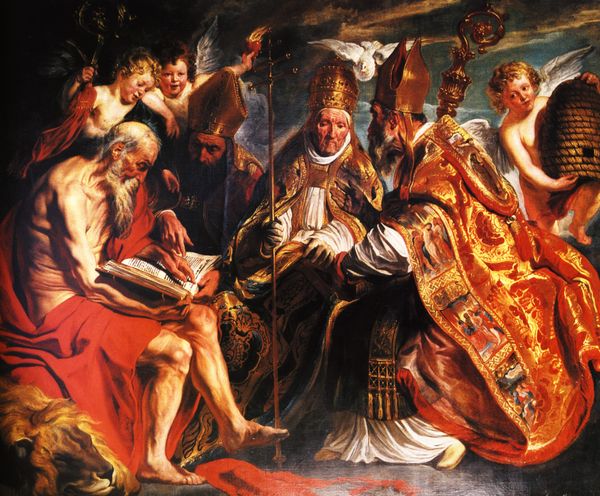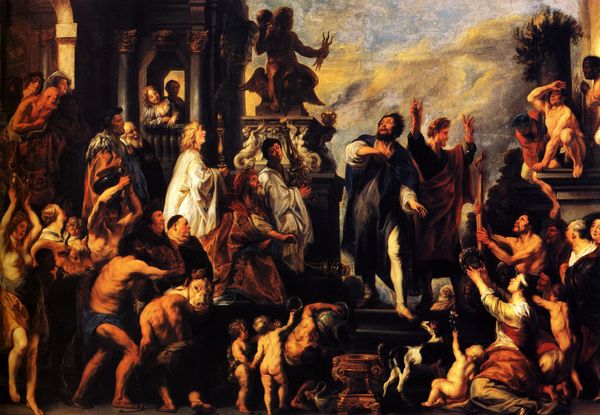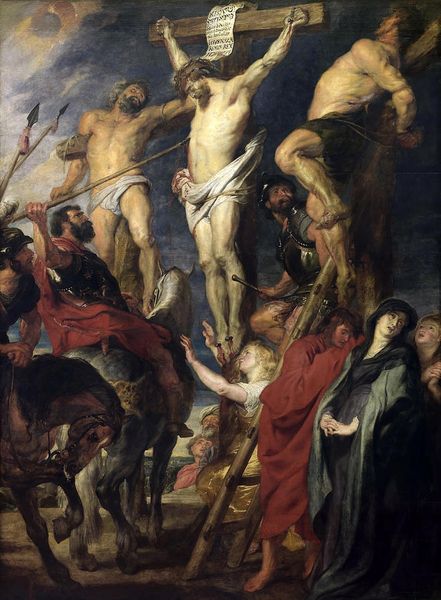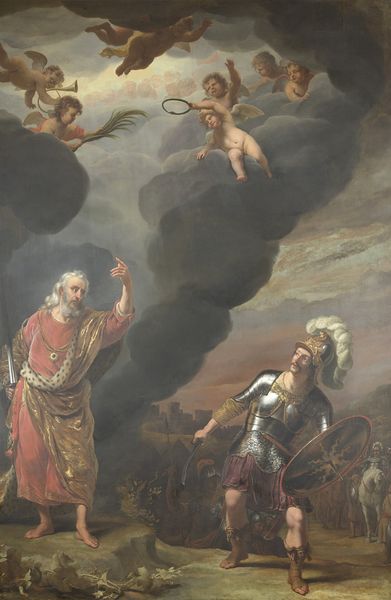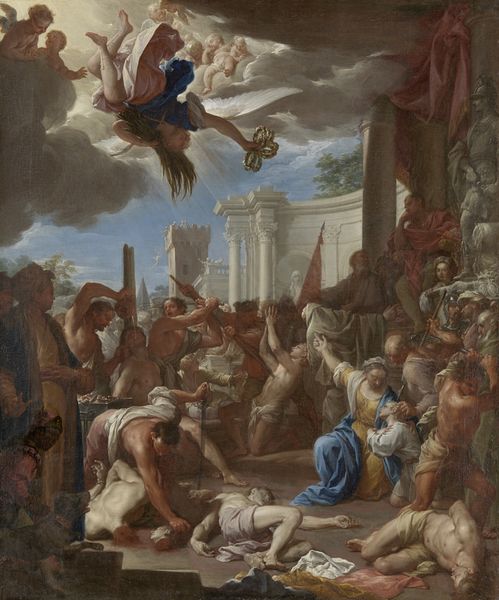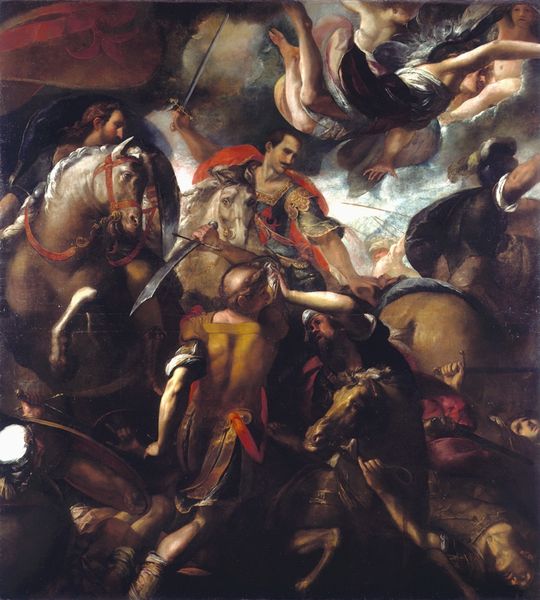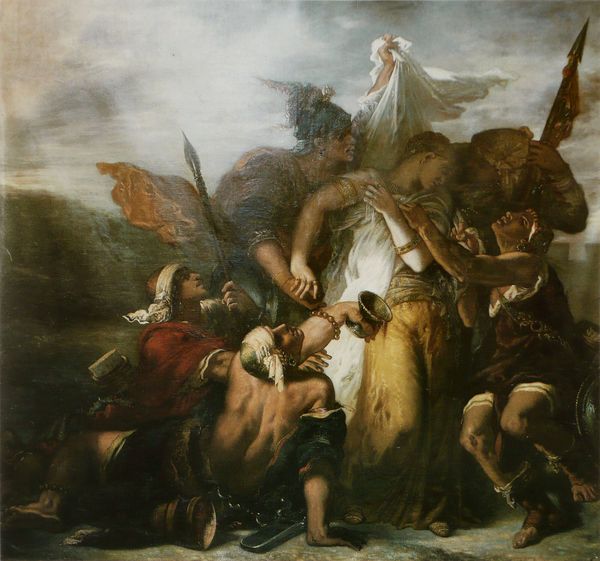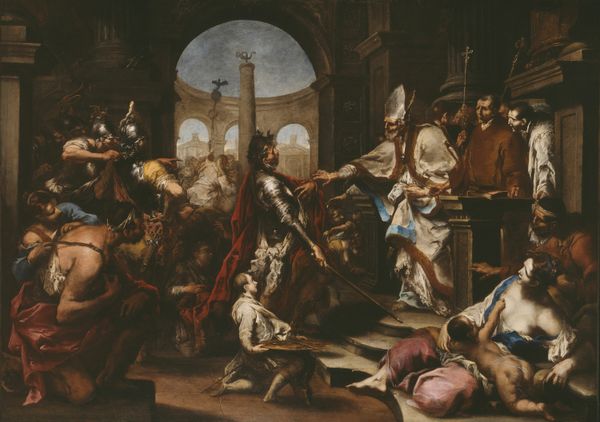
oil-paint
#
allegory
#
baroque
#
oil-paint
#
oil painting
#
neo expressionist
#
mythology
#
painting painterly
#
history-painting
Dimensions: 270 x 203 cm
Copyright: Public domain
Editor: So, here we have Claudio Coello's "Triumph of Saint Augustine" from 1664, an oil painting. It feels very theatrical, with all the figures swirling around. I'm curious about the use of oil paint to achieve this almost dreamlike quality. What draws your eye in this piece? Curator: Well, let's consider the materiality first. Oil paint in 17th-century Spain wasn't just a medium, but a statement of power, considering the pigment sourcing and the labor involved in its preparation and application, it speaks volumes. Look at the artist's build-up of the glazes to create that light, I would analyze the labor that the Baroque artists and assistants invested on layering up different oil glazes over the canvas to bring to life the skin, the robes and the clouds where the characters levitate to assess their effort, economic cost, time consumption. In your view, does Coello successfully utilizes the capabilities inherent in the materials, or perhaps even pushes their boundaries? Editor: I hadn't thought about the economics behind just using oil paints at that time. Thinking about that helps me to consider just how deliberate all the layers in the glazes and final strokes are. Given this triumph represents Augustine's intellect over heresy, the materiality almost emphasizes who had the power. Curator: Exactly! The swirling composition also echoes social forces, doesn't it? This wasn't just art for art's sake, it reinforces the established church during a period of reformation. I mean how can we explain otherwise, those dynamic robes which reflect those forces, by a means of dynamic labor reflected in the picture?. Are the tools used for creation, and the ways this materials were manipulated making a social statement? Editor: Definitely! I can appreciate the way Coello's handling of the material actually communicates real-world power structures and production, it really influences the allegory. Thanks for opening my eyes to a new way of analyzing paintings! Curator: Of course. By analyzing its materiality, we gain deeper understanding into not just what it represents, but why, and what purpose that served socially.
Comments
No comments
Be the first to comment and join the conversation on the ultimate creative platform.
